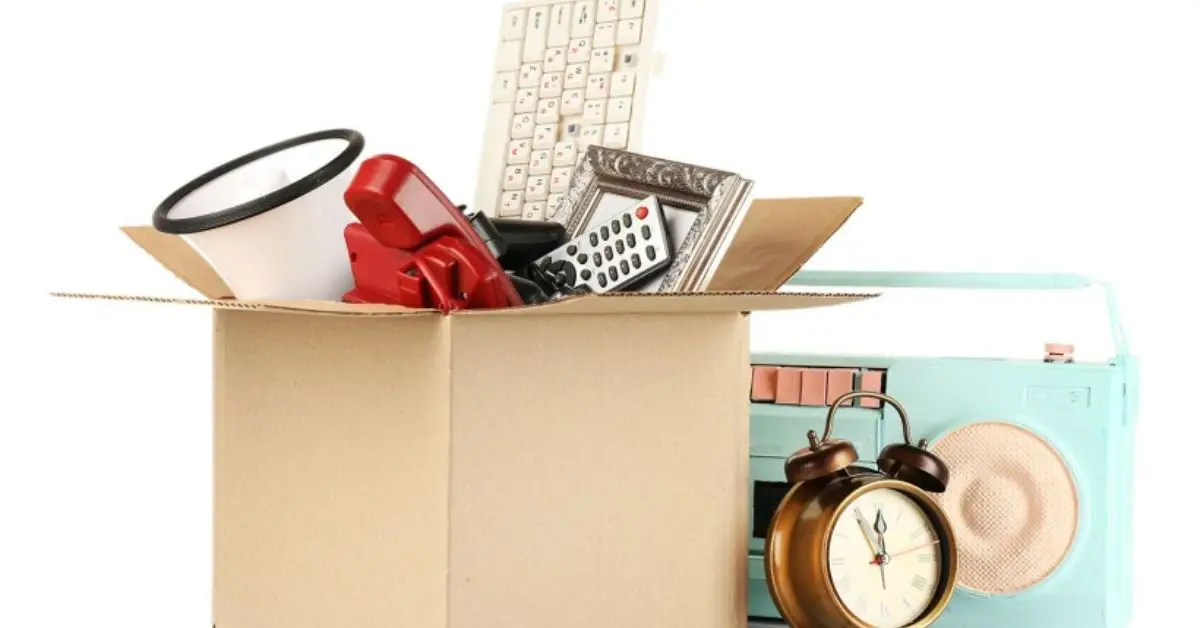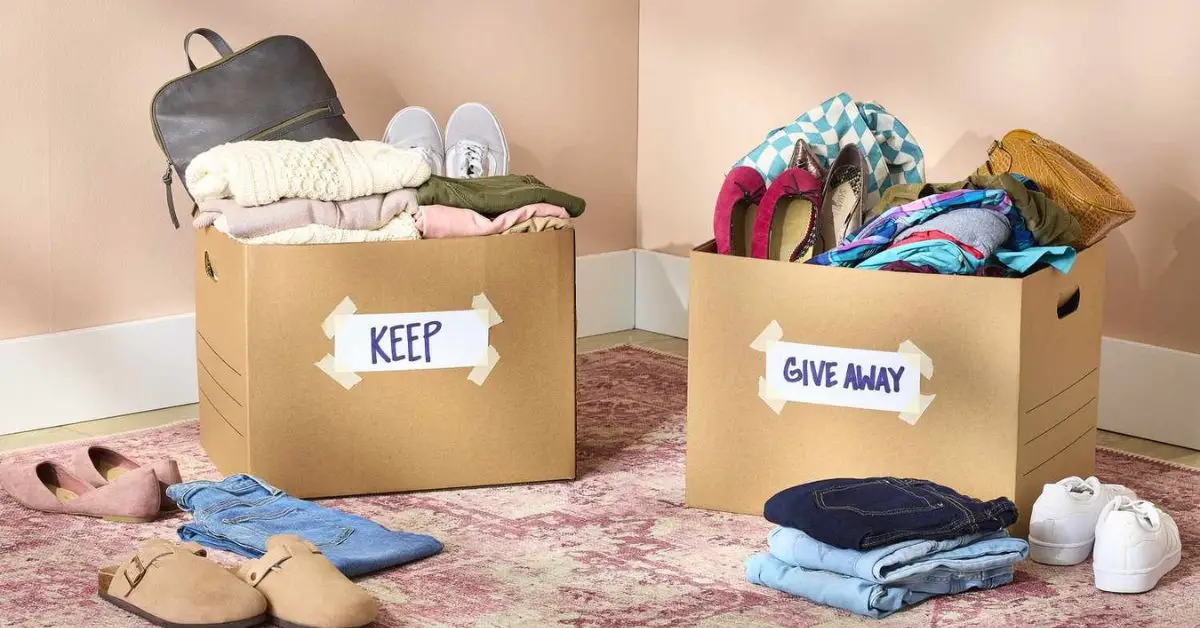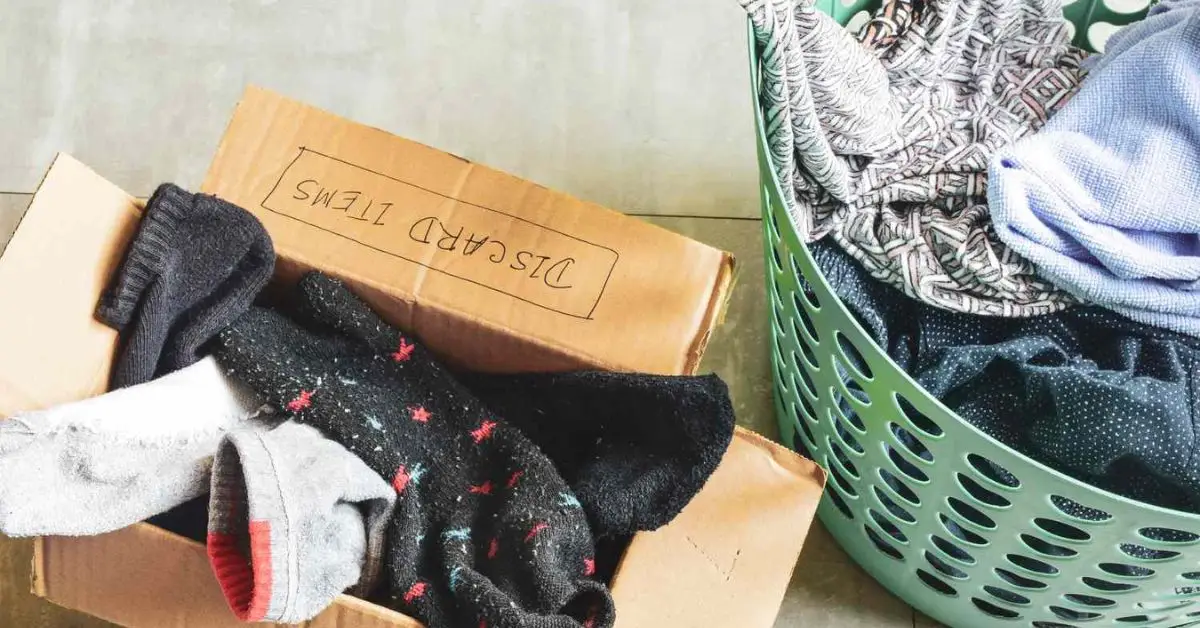Clear the Chaos: 10 Things to Get Rid of Today for Instant Calm at Home
I used to think clutter was just annoying—something that made a room look messy. But it’s more than that. Clutter pulls at your focus. It creates mental noise you don’t even realize you’re hearing until it’s gone.
Every time you pass that overstuffed drawer, the pile of paper on the counter, or the sweater you haven’t worn in two winters—it’s like your brain sighs a little. And those sighs add up.
Clutter doesn’t just fill your space. It steals your energy, your patience, and honestly, a bit of your peace.
But here’s the thing—clearing clutter doesn’t have to mean a full weekend project or an emotional breakdown over a shoebox of old memories. It can start with just 10 things. Today. Right now.
This article isn’t about becoming a minimalist. It’s about taking back control of your space, one small choice at a time. And by the end of this, you won’t just have less stuff—you’ll breathe easier in your own home.
Think of this as your reset button. No pressure. Just a fresh start.
Mindset Shifts That Make Decluttering Easier
Before you start tossing things in the trash or loading up a Goodwill box, take a pause. Real decluttering doesn’t begin with your stuff—it begins with your mindset.
Most clutter sticks around not because we need it, but because we think we might.
- What if I need this later?
- What if it was expensive?
- What if I feel guilty throwing it away?
Here’s the hard truth: You’re not holding onto things—you’re holding onto decisions you’ve been avoiding.
The goal isn’t to become a minimalist overnight. The goal is to reclaim control of your space, your time, and your energy. And that starts by changing the way you look at your stuff.
The “Just In Case” Trap
This is the most common reason Americans hang on to clutter. A backup coffee maker. A pile of free tote bags. Those cords and chargers from phones you haven’t used in years. You tell yourself, “I might need this someday.”
But if it’s been sitting untouched for 6–12 months, chances are… you won’t.
Instead, ask yourself:
If I didn’t already have this, would I go out and spend money to get it today?
If not, it’s probably safe to let it go.
Use Clear Rules to Make Faster Decisions
Decluttering becomes exhausting when every item feels like a debate. That’s where simple rules come in—no overthinking required.
Try these:
- The $20 / 20-Minute Rule: If it costs less than $20 and can be replaced in under 20 minutes, let it go.
- One-In, One-Out Rule: Buy a new pair of shoes? Donate or toss an old pair. Keeps your home in balance.
- The “Moving Test”: If you were packing up to move across the country, would you pay to ship or haul this?
These aren’t rigid systems. They’re just filters to help you stop holding on out of habit.
Because truthfully? Most of the stuff you’re afraid to part with is quietly holding you back.
10 Things You Can Toss Today (That You Won’t Miss at All)
Let’s be honest—decluttering feels overwhelming because we think it needs to be a full weekend project. But the fastest way to get momentum? Start with things that are obvious, low-emotion, and taking up space for no reason.

Here are 10 things you can get rid of today—no guilt, no second-guessing.
1. Expired Pantry Items
Canned soup from 2018. Half-used sauces with crusty lids. Protein powder you forgot you owned.
If it’s expired or gross, trash it. You’re not going to “use it up.” Let it go.
Emotional block: Guilt about waste.
Flip the mindset: The waste already happened—now you’re just cleaning it up.
2. Single Socks & Worn-Out Underwear
That pile of lonely socks hoping for a miracle match? Toss them. Same for stretched-out bras, underwear with holes, or anything you skip on laundry day.
Bonus: Your drawer will instantly feel 2x cleaner.
3. Old Electronics & Mystery Cables
Random USB cords, dead batteries, phones from college… you’re not fixing or selling them. And you’ll never figure out what that charger was for.
Do this instead: Bag it all and drop it at Best Buy’s e-waste station.
4. Freebies, Swag, and Samples
Conference tote bags. Hotel pens. Sample-sized shampoos from 2021. You don’t use them, they clutter your drawers, and they don’t spark joy. At all.
Let it go: If it came free, it owes you nothing.
5. Broken Things You Swear You’ll Fix
That lamp with a wobbly base. The blender that smells like burnt rubber. If it’s been broken for 6+ months, you’re not fixing it—you’re babysitting trash.
Set a rule: If it’s not fixed by Friday, it goes.
6. Clothes That Don’t Fit (Physically or Emotionally)
Be honest: Are you keeping it for the body you used to have, or the one you hope to have someday? Either way, it’s holding emotional weight you don’t need in your closet.
Donate it: Let it be useful to someone now, not “someday.”
7. Excess Mugs, Water Bottles, and Travel Cups
You only use the same 2–3 anyway. The rest just crowd the cabinet and fall out when you open the door.
Keep your favorites: Donate the rest. They’ll be used more in someone else’s home.
8. Instruction Manuals for Things You Don’t Own
That stack of faded, stapled manuals for appliances you replaced five years ago? Recycle them. Most updated versions are online anyway.
Extra tip: Do a quick digital search if you’re worried—then toss guilt-free.
9. Duplicate Kitchen Tools
Three bottle openers. Two potato mashers. Five spatulas. Most kitchens are loaded with duplicates that never get used.
Pick the best, ditch the rest.
10. Gifts You Never Liked
It’s okay to appreciate the gesture and let go of the item. You’re not rejecting the person—you’re just refusing to carry their taste in your home forever.
Reminder: You don’t have to keep something just because someone else once liked it.
Start with even just 3 of these, and I promise—you’ll feel lighter. Like you finally took a deep breath.
This isn’t about cleaning. It’s about clearing.
So you can see your home differently… and maybe even yourself.
Decluttering Hotspots That Make the Biggest Difference
If you’re short on time or energy, focus on the zones that create the most chaos in your day-to-day life. These are the spots that quietly stress you out every time you pass by them—even if you’ve stopped noticing.
You don’t have to tackle the whole house. Just pick one of these spaces, spend 20–30 minutes, and give yourself a noticeable win.
The Entryway or Mudroom
Shoes everywhere. Mail you never sorted. Bags, keys, random receipts. The first few steps into your home set the tone for everything else.
I’ve found that when my entry’s clear, I walk in calmer. When it’s a mess, I feel like I’m behind before I’ve even taken my coat off.
What to toss:
- Old shoes no one wears
- Dried-up pens or junk drawer overflow
- Broken umbrellas, stretched-out gloves, tangled dog leashes
The Kitchen Catch-All Drawer
You know the one. Batteries, rubber bands, menus, flashlights that don’t work, maybe a takeout soy sauce packet from 2016. We all have it.
Set a timer for 15 minutes. Anything expired, broken, or mystery? It goes. No one needs five sets of measuring spoons or three broken scissors.
You’ll be shocked how often you open this drawer once it’s actually functional.
The Bathroom Cabinet
So many of us hold onto old beauty products “just in case.” Half-used bottles, expired meds, skincare that didn’t work for you.
What to toss:
- Expired meds (Google your local pharmacy’s disposal site)
- Dried-out mascara, old razors
- Sample packets and hotel toiletries you’ll never actually use
This space is small, but cleaning it up makes every morning feel easier.
The Garage or Basement Storage Shelf
This is where clutter goes to hide. Tools you don’t use, boxes you never unpacked, things you’ve kept “just in case.” But storage should hold what’s useful—not delay hard decisions. If your attic has become a clutter magnet, you’ll love these 7 genius ways to declutter your attic this summer—without the overwhelm.
Ask: If I forgot I owned this, do I really need it?
Keep it simple: Pick one shelf or one bin. Sort fast. Let go of the dead weight.
Cleaning up these spots doesn’t just clear space. It shortens your morning routine. It makes you more likely to cook dinner. It keeps your evenings from feeling like damage control.
Small areas, big payoff.
Declutter by Season – What to Toss This Month
If you’ve ever felt like clutter sneaks back in the second you stop paying attention, you’re not wrong. That’s why pros recommend aligning your decluttering with the seasons.

Every 2–3 months, life shifts—your clothes change, your schedule adjusts, and your home should too.
Here’s how I break it down, plus what to toss depending on the season you’re in right now.
Spring: Clear the Hidden Corners
Spring isn’t just for deep cleaning—it’s for lightening the load.
Toss or donate:
- Winter clothes you didn’t wear once
- Dried-up cleaning supplies or extra bottles
- Broken garden tools or expired seeds
Spring is the perfect time to reset your surroundings and your energy.
Summer: Ditch What Slows You Down
Hot weather means outdoor living, travel, and simpler routines. You don’t want clutter dragging you back inside.
Toss:
- Old sunscreen and expired bug spray
- Broken pool toys or worn-out outdoor gear
- Clunky kitchen tools you never use during BBQ season
Backed by research: According to Budget Dumpster’s national decluttering survey, 66% of people feel overwhelmed by stuff in their home—but summer is when they feel most motivated to do something about it.
Use that momentum to your advantage.
Fall: Prep for the Cozy Season
Before pumpkin spice takes over, it’s time to make space for the season ahead.
Toss:
- Summer clothes that stayed in your drawer all season
- Decor you didn’t bother putting out
- School or office supplies you no longer use
This makes decluttering less overwhelming and more part of your daily rhythm.
Winter: Tighten Things Up Indoors
This is when clutter feels loudest—because you’re stuck inside with it. Cozy doesn’t mean crowded. And if you’re sorting through linens or beach towels, consider these 6 clever ways to upcycle old beach towels instead of tossing them.
Toss or donate:
- Old holiday decorations you didn’t use (yes, even the tangled lights)
- Extra blankets, towels, or linens you’ve “saved” for years
- Mugs and seasonal dishware you forgot you even had
Keeping clutter out of storage spaces makes it easier to access what you actually use throughout the season.
Every season brings new clutter. But it also brings a new chance to reset. Use the calendar—not your mood—as your reminder.
Pro tip: Mark a recurring “declutter check-in” on your phone every 3 months. Trust me, your future self will thank you.
What Not to Throw Away – Decluttering Without Regret
Decluttering isn’t just about getting rid of stuff—it’s also about protecting what matters.

I’ve seen so many people go from motivated to regretful because they purged too quickly. And once it’s gone, it’s gone.
Here’s a list of things to slow down and double-check before you throw them away. Not everything is clutter. Some things are part of your story—or have real value you didn’t realize.
Sentimental Items With a Story
I’m not talking about every birthday card or every macaroni drawing. But if something makes you pause and feel something—good or bittersweet—pay attention.
Keep a small “memory box” or digitize things like:
- Old letters from loved ones
- Childhood photos (especially originals)
- Journals, yearbooks, meaningful artwork
Keeping emotionally significant items can actually support your well-being and help you process identity and memory during major life transitions.
Legal or Financial Documents
In a decluttering wave, people sometimes toss old tax records, titles, or medical paperwork. But there are clear rules for what to keep and how long.
Don’t throw away without checking:
- Social Security documents
- Tax returns (keep for at least 7 years)
- Car titles, home deeds, insurance policies
Tip: Use the IRS official guidelines for document retention.
Family Heirlooms (Even If You Don’t Like Them)
You might hate that old silver tea set from your grandmother—but your cousin might treasure it. Or your child may someday see value where you don’t right now.
What to do instead:
- Take a photo, share the story
- Ask other family members before donating
- Store small heirlooms in a labeled memory bin
Regret often shows up after the item’s gone—especially when it connects to people who are no longer here.
High-Value Items You Haven’t Researched
Some clutter is actually cash. Before dumping things at Goodwill, take 10 minutes to Google or check resale apps like Facebook Marketplace, eBay, or Poshmark.
You might want to pause before tossing:
- Designer handbags, leather goods
- Vintage electronics (old Apple iPods, Polaroids)
- Comic books, old toys, collectible cards
Decluttering isn’t just about speed—it’s about smart decisions.
If you’re unsure about something, here’s a simple rule I use:
Set it aside for 30 days. If I don’t miss it, I let it go.
Because the goal isn’t to have less—it’s to have less of what doesn’t matter and more of what does.
How to Build a Decluttering Habit (So Stuff Doesn’t Pile Up Again)
One decluttering session can feel amazing. But let’s be honest: if you don’t change the habits that brought the clutter in, it’ll creep right back.

Here’s what’s worked for me—and for others who don’t want to spend every weekend “resetting” their house from scratch.
These aren’t trends. They’re systems that protect your space from silently getting overrun again.
Create a Donation Bin (and Keep It Visible)
Put a box or tote bag in your closet or laundry room labeled “donate.” Anytime you try something on and think, “Meh, I don’t love this”—toss it in.
This tiny change keeps you decluttering in real time, not once a year.
Why it works: You eliminate decision fatigue. You’re not “decluttering,” you’re just making a normal edit when something no longer fits your life.
Use the One-In, One-Out Rule
Bought a new hoodie? Great—what’s one old one you’re ready to release?
This rule is simple but surprisingly effective. It forces you to stay intentional, especially when you’re shopping for “fun” not function.
Tip: Teach this habit to your kids early—it’s a game-changer for toy clutter.
Block 10 Minutes a Week on Your Calendar
Not a deep clean. Not a full room. Just one drawer, shelf, or corner. Want a super simple routine? Check out these 5 minimalist-approved daily decluttering habits that take the guesswork out of staying tidy.
Research from Psychology Today suggests habits stick better when they’re low-effort and consistent, not all-or-nothing.
Pick a recurring time—Sunday night, Friday morning, whatever fits—and make it a no-pressure reset.
Stop “Just in Case” Thinking
Most clutter isn’t there because we want it. It’s because we’re afraid we might need it someday.
But in reality? You rarely do. And the mental cost of keeping all those “maybe” items is often higher than the cost of replacing one or two of them in the future.
Mindset reframe: You’re not throwing away security. You’re creating space for the person you are now.
Follow the 20/20 Rule (Popularized by The Minimalists)
If something costs less than $20 and can be replaced within 20 minutes, you don’t need to hold onto it just in case.
This applies to:
- Extra chargers
- Duplicate kitchen tools
- Office supplies and craft extras
This rule has helped thousands of people reduce “backup clutter” they never actually use.
Decluttering once is a project. Staying decluttered is a mindset. Start small. Repeat often. Make it frictionless.
And more importantly—make it yours.
Final Mindset Shifts – From Cluttered to Calm
Decluttering isn’t about becoming a minimalist. It’s about getting your life back from the noise.
Most people don’t actually want a Pinterest-perfect home.
What we want is to walk into our space and feel… okay. Clear. Calm. Safe. Ours.
That starts by shifting how we think—not just what we throw away.
Clutter Isn’t Just Physical. It’s Emotional.
That pile of unopened mail? Guilt.
That dress you haven’t worn in three years? Pressure.
That drawer full of tangled cords? Avoidance.
I’m not judging. I’ve been there. But until you see clutter as a feeling, not just stuff—it’ll always sneak back in.
Start asking:
- Why am I keeping this?
- What does this item say to me when I see it?
- How do I want to feel when I walk into this room?
You’re Not Lazy. You’re Overstimulated.
Many of us blame ourselves: “I should be more organized.” But clutter builds when you’re juggling too much—and never get a break.
So if you’ve struggled to keep up? That’s not failure. It’s your nervous system saying, “I need less.”
Let Go of Sunk Cost Guilt
Keeping something just because it was expensive or a gift doesn’t make you grateful. It makes you stuck.
Reminder: The money’s already spent. The gift was given. What you keep now should serve the life you actually live—not the one you feel obligated to honor.
Don’t Aim for Perfect. Aim for Peace.
Perfection is paralyzing.
Peace is doable.
Your home doesn’t need to look like a magazine.
It needs to feel like a place where you can exhale.
And that begins with letting go—not just of stuff, but of pressure.
What Now?
Pick one drawer. One bin. One corner.
Get a trash bag. A donate box. Set a timer for 20 minutes.
That’s it.
Then notice how you feel when it’s done.
That feeling? That’s the life you’re making room for.
Want more real-life tips to make your home feel lighter? Visit Build Like New for practical decluttering ideas, room-by-room guides, and mindset tools that actually stick.
Disclaimer: This content is for informational purposes only and does not substitute professional advice. Always consult a qualified expert for personalized recommendations regarding your home, health, or finances.


